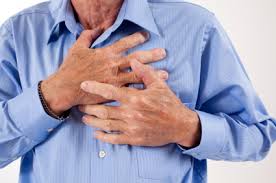Do you experience pain in the chest when working out? Perhaps you may ignore the occurrence because the pain disappears quickly after you stopped exercising. Don’t ignore the pain just because it ceases when you are at rest. You may be suffering from angina pectoris, a condition which literally translates to ‘tight chest’ and which happens because the flow of blood to the heart muscles is restricted. The pain is often described as dull, heavy or tight and can also be felt in the neck, jaw, and arms.
Causes
What causes angina pectoris, you might ask. Usually, the primary cause of this condition is coronary atherosclerosis, or the thickening of the blood arteries connected to the heart. Coronary atherosclerosis happens when the fatty deposits clog the arteries and restrict the flow of blood to the heart. Other ailments that can aggravate it are high blood pressure and heart valve diseases like severe aortic stenosis.
Types
 There are three types of angina. The first is stable angina which is characterized by chest pain that occurs when the heart has to work harder, just like during an exercise. The second is stable angina, when pain can occur even when you are at rest. It is a more bothersome type since it could lead to a heart attack. The third is variant angina which typically happens when the heart is at rest, usually in the early morning.
There are three types of angina. The first is stable angina which is characterized by chest pain that occurs when the heart has to work harder, just like during an exercise. The second is stable angina, when pain can occur even when you are at rest. It is a more bothersome type since it could lead to a heart attack. The third is variant angina which typically happens when the heart is at rest, usually in the early morning.
Symptoms
The most common symptom of angina pectoris is pain or discomfort in the chest, particularly the middle part of it. You can experience the chest pain when you are exercising or doing laborious work like cleaning the house. The pain then goes away when you rest. You can also suffer from the tight, dull or heavy chest pains when you are emotionally stressed. In some cases, the chest pain may have associated symptoms like breathlessness, dizziness and exhaustion.
Your doctor can confirm that you are suffering from angina pectoris by studying the symptoms, your medical history, and asking you to undergo an electrocardiogram (ECG) test. You may also be subjected to other tests like nuclear myocardial perfusion scan, stress echo test, heart CT scan and perfusion cardiac magnetic resonance imaging.
Treatment
You may be prescribed with medications to control the symptoms of angina pectoris. One of the more frequently-prescribed drugs for this condition is Crestor, or rosuvastatin calcium. It works by lessening the levels of bad cholesterol in the body which in turn reduces the amount of cholesterol that clogs and narrows the arteries. When you take Crestor, you can significantly reduce the risks of an angina pectoris attack.
Take Crestor as prescribed by your physician. However, be warned that you may experience side effects like headache, dizziness, abdominal pain, nausea, unexplained exhaustion and constipation especially if its your first time to take the drug. You can also lessen your risks of experiencing angina attack by changing your lifestyle, particularly when it comes to your diet. Eat lots of vegetables and fruits and avoid foods that are rich in sugar and saturated fats. Quit smoking, too, and lose weight if you really want to avoid experiencing that painful feeling in your chest.
Share This